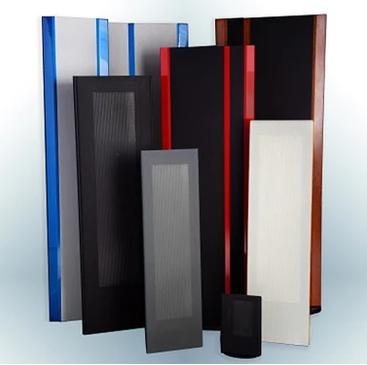The below information is intended to help with diagnostics and troubleshooting. This information is currently being built out with our website right now and is not meant to be taken as comprehensive or exhaustive.
MISSING SOUND
One or more sections are not playing:
-FUSES
As a general good default, check the fuses but if the speaker is 2-way, and the tweeter is not working (no treble or “highs”), especially check the fuse(s). If the speaker is 3-way, the same is true for the midrange fuse.
The fuses can blow without it being visually evident. Replacing them just to be sure, or testing them for continuity, after removing them, with a multimeter is ideal.
-CONNECTION
Are the speakers hooked up correctly? Are the tweeter attenuators in place? For applicable models are the External Crossover boxes in use and connected properly? If a speaker is DOA or just hooked up after having been purchase recently connection issues are likely.-SYSTEM
There are many other components in an audio system that can fail. The cables, the amps, the preamp, the source, etc. Swapping the left and right speaker, if only one of them is exhibiting the probably, is a great way to narrow down which device is the culprit. If the problem does not follow the speaker, then the issue is elsewhere in the system.-BROKEN WIRE OR FOIL
Assuming none of the above are the problem, then the most likely issue is that the wire or foil of the section that is missing is broken. This can be resolved by senting the speaker in for a strip-and-rewire or by purchasing and implementing a rewire kit.-A DISCONTINUITY ELSEWHERE
If none of the above are problems, the driver is functioning, and everything else seem 100%, then the issues is somewhere in the nameplate or the crossover board. The most likely place is the connectors on the nameplate (terminal screws or banana jacks) but a wire break or bad joint anywhere could be the break.EXTRA SOUNDS
There are extraneous/additional noises:
-DELAMINATION
The undoubtedly most common issue for any Magnepan speaker to face is delamination. The wires are separating from the Mylar as a result of the glue failing. This is typically a time related issue but salt spray, humidity, and UV damage can rapidly expedite this process. This problem manifests as a distinct “buzzing”, sometimes characterized as a “rattling”. The solution is to either complete a strip-and-rewire or to follow the reattachment process. Sometimes this can happen with foil, too, which produces a, “hum.”

-BOTTOMING, OR CLEARANCE ISSUES
Sometimes due to age, other times due to damage or other reasons but most likely due to the speakers being overdriven, the clearance of a speaker may become unideal and Mylar will make contact with the magnets. This creates an obvious and loud “slapping” sound. The solution to this, if the speaker is being overdriven, is simply to turn the system down. Otherwise the speaker will need to be, “hooked.” This is typically not something a customer can accomplish and the speaker needs to be sent in.-MYLAR TEAR
If the Mylar is torn a, “flapping” sound will be produced. Mylar damage significant enough to produce strong audible distortion cannot be repaired by the customer.
-MYLAR SLIP
This problem will sound like bottoming but is typically visually evident. The Mylar will be wrinkled from the corner and/or around the tie-downs. This is typically not something a customer can accomplish and the speaker needs to be sent in.

-TIE-DOWN ISSUES
On older models in particular, sometimes the adhesive can give way or tie-downs can fail which creates a similar problem to bottoming. Mechanical tie-downs simply need to be re-fastened, adhesive tie downs typically will need to be replaced with mechanical tie-downs.
-CRACKLE
This problem is exclusive to foil. A foil break under a tie-down, under tape, or under a turn can form a mostly continuitous circuit. Especially at low volumes a speaker with a foil break can create a, “crackle” as continuity temporarily cuts out. Sometimes a patch can be implemented to repair this but the most ideal procedure would be for the section to be completely stripped and refoiled.
-INTERMITTENT CONTINUITY
A broken terminal screw (for instance) can create intermittency that, similar to above, will create a loud, “popping” as the signal quickly cuts in and out. A cold solder joint, a loose connector, or a broken wire can cause this to take place. Typically this is an easy fix.


